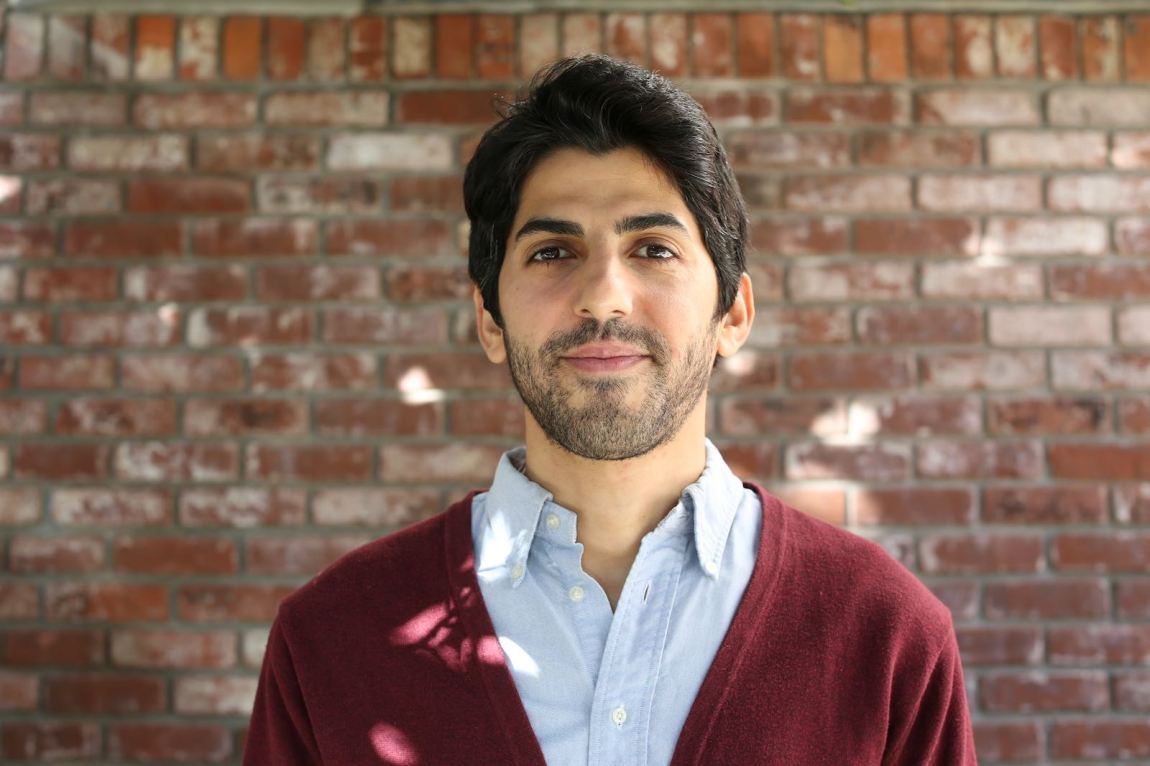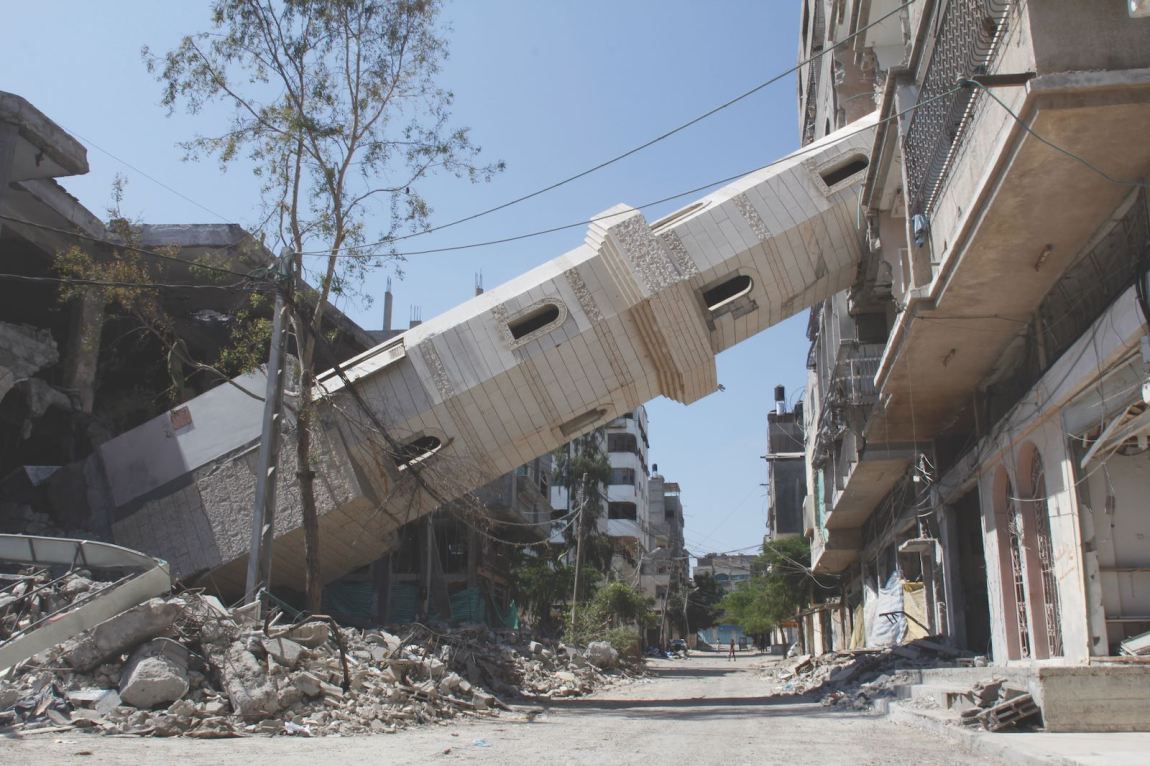On November 6, 2020, we published Jehad al-Saftawi’s photo-essay “The Gaza I Grew Up In,” an adaptation from his book My Gaza: A City in Photographs, which is forthcoming from McSweeney’s. Today, the twenty-nine-year-old photojournalist lives with his wife, Lara, in California, where they have sought asylum, but his work here dates from his years documenting daily life in the narrow strip of land on the Mediterranean coast between Israel and Egypt that is home to some 1.9 million Palestinians.
To be a journalist in Gaza, which, since 2007, has effectively been a one-party Islamist statelet ruled by Hamas, is to work in a minefield—at times, literally. Many of the images in our selection show the devastating effects of conflict on the territory, one of the most densely populated places on earth. Periodic offensives like Operation Protective Edge in 2014—dubbed “mowing the grass” by Israeli security experts—are designed to degrade the tunnels and stores of rockets built up by Hamas and other militant groups like Palestinian Islamic Jihad. But they have also resulted in the mass destruction of property and deaths of thousands of civilians.
“You are going to be always interrupted while working and questioned about the place you work for and why you want to cover this,” al-Saftawi explained to me via email this week. But it’s not only the Hamas government’s media office that wants to know what a reporter with a camera is up to at every turn. “A big part of the population is highly partisan in nature,” he went on. “Each party serves its loyal families, the thousands of factions’ members who are very suspicious of any strangers getting into their neighborhoods.”
As he relates in his introduction to the photo-essay, al-Saftawi himself has very personal experience of one of those factions. His father, Imad al-Saftawi, was involved in Islamic Jihad in Gaza when it first came to prominence in the 1980s; the Muslim Brotherhood-influenced group pioneered the knife attacks and suicide bombings in Israel that later became a defining feature of the Second Intifada. Militancy and internecine factionalism were second nature: Imad’s own father had been a senior figure in Fatah, the mainstream faction in the predominantly secular Palestinian Liberation Organization, who was assassinated in 1993 by assailants unknown, having survived an attempt the year before by the Islamic Resistance Movement.
After his arrest on terrorism charges, Imad al-Saftawi escaped abroad for a time; Jehad and another brother were born in Syria. Imad was rehabilitated in the late 1990s, after apparently splitting from Islamic Jihad’s leadership over its rejection of the Oslo Accords, and he returned to work for the Palestinian Authority’s security establishment in Gaza. But the Israelis suspected that he had not severed ties with Islamic Jihad militants, and he was re-arrested in 2000; al-Saftawi senior spent the next eighteen years in prison.
Even from behind bars, though, as Jehad relates, his father still exerted an iron control over their Islamic upbringing—an authority only reinforced by his social status as a hero of the resistance. For Jehad, those were increasingly years of conflict with his family, close and tight-knit though it was.
“I think losing my religious faith is what gave me strength,” he told me. “It made me see other dimensions and how we can be oppressors ourselves, what it would be like if we Palestinians had more military capability or advantage.
“I started to see links between confiscating individual rights,” he went on, “like the extreme way of my Hamsawi teachers’ rubbing sand on the heads of my school mates who didn’t obey [the religious rules] with their haircuts, and the relationship with confiscating others’ basic human rights, like your right to speech, or with what I saw later in my life from horrible scenes of dead innocents on our streets.”
Despite seeking asylum in 2016, after being invited on a retreat in the US by a media nonprofit he’d been working with, he has remained on warm terms with his family back in Gaza. “I miss the night gatherings with my mother and siblings, thinking of possible futures for us,” he said. “I miss the slow rhythm of time and capitalism that is different from living here. I miss the warmth and kindness of the people in Gaza, the feeling of shared destinies and solidarity that people have.”
He has worked in restaurants and got some multimedia gig work in California, but he and Lara are now trying to establish their own nonprofit organization “that will serve as a hub for refugee creatives.” He has mostly found people in the US welcoming and curious, though he has also experienced harsh treatment from some Palestinian Americans who regard him as “selling out our people.” But he tries to focus on the work and the stories his images can tell—“how this humanization can benefit the welfare of everyone in Gaza,” as he puts it.
Advertisement
I had my own curiosity, about his name: Is Jehad related to “jihad,” I asked. “Yes, it’s the same word but with different English spelling,” he explained. “Actually, my father gave me the name because he adores his brother, who is also named Jehad.
“My father likes the meanings of my name, and considers himself a ‘mujahed’ (jihadi). Carrying my name is another controversial stereotype that I have to deal with.”




